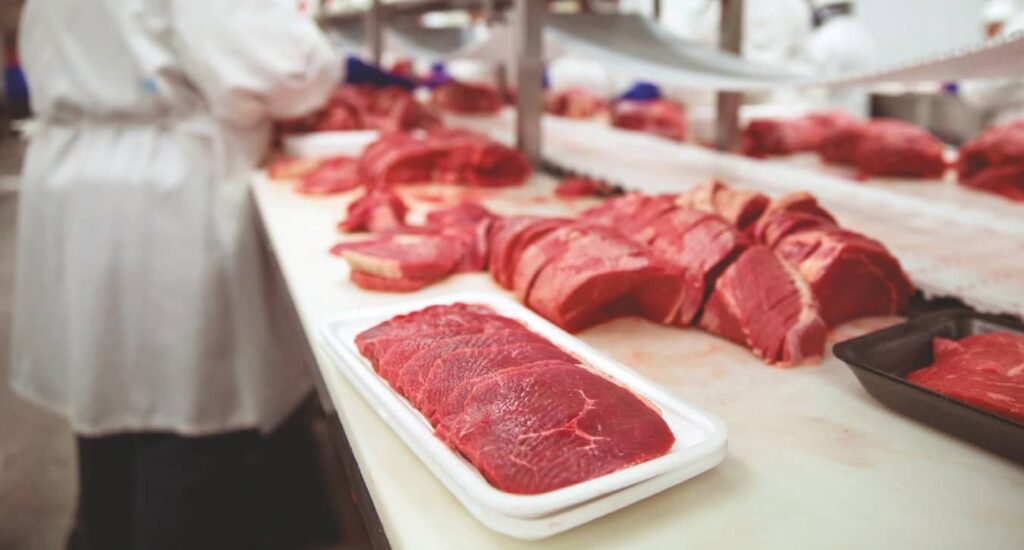When you think about primary meat processing, you probably do not think about technology. You might think about the animals, and how they are experiencing this process as they go along. Consequently, it is important to consider animal well-being throughout this process. This is where technology is the key enabler, ranging from breeding and growth to the yards and holding paddocks.
Core processes of meat processing
The core processes of primary meat processing follow the livestock through the ‘stun and stick’ process, where the animal will be slaughtered to the de-hiding and splitting quartering. All these steps are supported by technology. The ‘stun and stick’ process is often considered the most important technological advancement. Due to mature technology, animals do not experience any pain.
Animal welfare at heart
Slaughter operations are also trying their best to make the process before the stunning as naturally as possible. By reducing stress before and during this process, it is more ethical and better for all parties involved.
Slaughter operations contain more than that
Next to the core process, there is also blood collection processing that is of relevance. This is a step that is cumbersome and requires very specific technology. Blood is being separated between edible and non-edible parts. For example, to maximize the usage of the animal’s resources, the edible parts can be used in sausages. Other use cases for these products are pet food processing and rendered feed stuff.
Processing the meat
Deboning is another crucial element of primary meat processing. This step takes care of the splitting of meat and bones as well as the remaining hide. Currently, this process requires human involvement to make sure that all pieces of meat are cut correctly and the hide is removed. When looking at the future of meat processing, this can be automated using specialized robots. For example, machine learning can be leveraged to identify types of meats and bones to make sure it is properly separated.
Product creation
Once the bones have been separated the meat can be processed into hams, sausages, liver, and canned products. This often happens in the same factory, but can also happen at another premise. This is dependent on the nature of the slaughter operations and the integration of the supply chain.
How control systems can make the difference
Slaughter operations generally leverage control systems to manage the overall site. These systems are able to communicate with all the factory equipment through “Internet of Things” (IoT) devices. This makes it possible to have all the data in a single place. This is helpful to improve operations over time, as the data can be used for analytical purposes. Next to that, it helps to identify outages and spot the bottlenecks of the processes. This allows the company to act upon incidents faster and more efficiently. Control systems can make all the difference for slaughter operations and should be regularly updated to improve efficiency.
